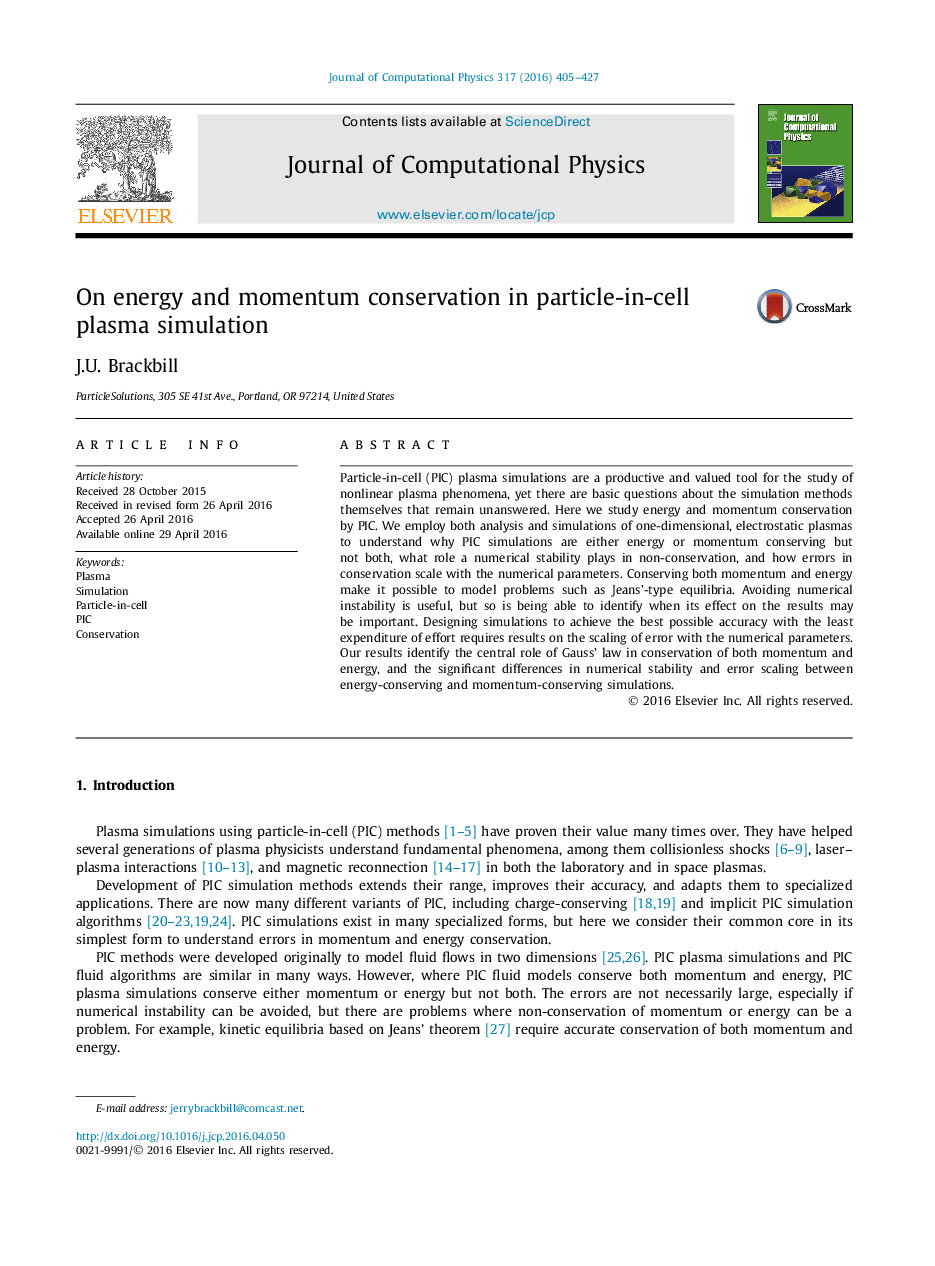| Article ID | Journal | Published Year | Pages | File Type |
|---|---|---|---|---|
| 6930030 | Journal of Computational Physics | 2016 | 23 Pages |
Abstract
Particle-in-cell (PIC) plasma simulations are a productive and valued tool for the study of nonlinear plasma phenomena, yet there are basic questions about the simulation methods themselves that remain unanswered. Here we study energy and momentum conservation by PIC. We employ both analysis and simulations of one-dimensional, electrostatic plasmas to understand why PIC simulations are either energy or momentum conserving but not both, what role a numerical stability plays in non-conservation, and how errors in conservation scale with the numerical parameters. Conserving both momentum and energy make it possible to model problems such as Jeans'-type equilibria. Avoiding numerical instability is useful, but so is being able to identify when its effect on the results may be important. Designing simulations to achieve the best possible accuracy with the least expenditure of effort requires results on the scaling of error with the numerical parameters. Our results identify the central role of Gauss' law in conservation of both momentum and energy, and the significant differences in numerical stability and error scaling between energy-conserving and momentum-conserving simulations.
Related Topics
Physical Sciences and Engineering
Computer Science
Computer Science Applications
Authors
J.U. Brackbill,
